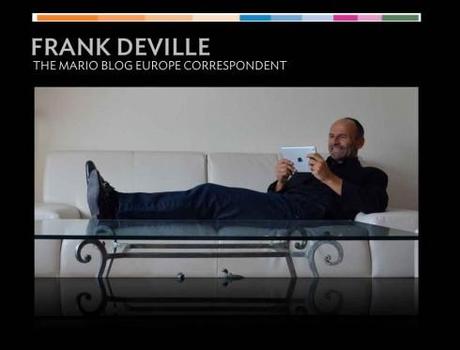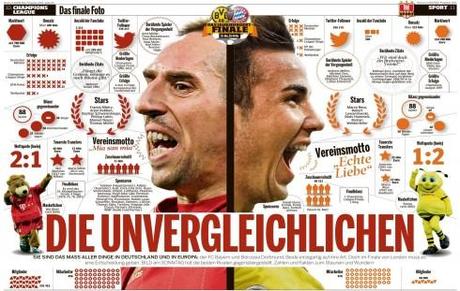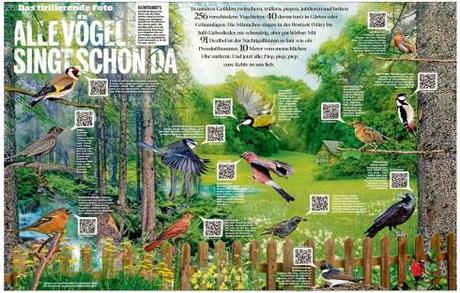TAKEAWAY: In an essay this week, Nobel laureate novelist Mario Vargas Llosa hints at the benefits of New Journalism. Time to resurrect the idea that the techniques of fiction can work well to report reality? PLUS: Pages we like
Reading an essay by Nobel laureate novelist Mario Vargas Llosa, one of my favorite authors, in Monday’s editions of Spain’s El Pais and connecting dots here.
Vargas Llosa began his career as a journalist, and he continues to write for newspapers, such as El Pais, from time to time. I am always happy when I see one of these essays. Not only is Vargas Llosa’s Spanish prose a gift all by itself, but his erudition enriches as well.
In this latest essay, Vargas Llosa tackles the subject of journalism, inspired by a collection of articles and interviews by the Argentine journalist, Leila Guerreiro. I was initially attracted to the piece because of a summary highlight which explains that “journalism can be one of the fine arts without renouncing its primary obligation which is to inform”.
As soon as I got a little deeper into the text, I was interested to see Vargas Llosa drawing parallels between Leila Guerriero’s collection, titled Plano Americano, and the New Journalism introduced by Truman Capote in his classic novel, In Cold Blood, an example of the novel based on reality, which in this case was a murder that took place in rural Kansas. The New Journalism found its best known exponents in such writers as Gay Talese, Norman Mailer, Hunter S. Thompson,Joan Didion, and Tom Wolfe.
Vargas Llosa argues that the New Journalism, in the works of these writers, gave the literary approach its main emphasis, with journalism becoming quite secondary. But, he writes, in the works of Leila Guerreiro, with her in depth background of the subjects she interviews, and all the exhaustive research she conducts before she writes a word, it is all about journalism using the tools of literature.
Renewing New Journalism
As I read the Vargas Llosa essay, and just emerging from the Nordic Media Festival in Bergen, Norway, where storytelling played a key role, I could not help but imagine a revival of the New Journalism techniques as printed newspapers find themselves in the process of accommodating print editions in the midst of a multi platform, media quartet world.
If, as we have witnessed in recent years, printed newspapers have lost the time advantage, then it makes sense to adopt a more narrative style of writing: the story beyond the story, or the “I know that you know, but I want to tell you more” coverage.
The New Journalism served us well in the 70s, but it had its best representations in such magazines as Esquire, in the hands of writers who tap danced between fiction and reality in subject and technique.
I remember that, as part of a Newspaper Fund Fellowship at the University of Oklahoma in 1972, a group of us young college professors came to spend three weeks during a summer session to learn more about the latest journalistic techniques.
The New Journalism consumed a great part of our workshop.
“Teach your students that there is more to writing a story than the five W’s,“ said Professor Mary Lyle Weeks, our instructor. “They need to get more inventive, to try narrative styles, to go beyond the essentials of the story, and to lure those readers in with the way they phrase that important first paragraph.“
This is still good advice today. Vargas Llosa tells us so, adding:
In the case of Leila Guerreiro, her profiles and interviews, use the best techniques a novelist could use, but her method of structuring the text, utilizing the various points of view of characters in the story, and playing with the concept of time, as well as the language, which she uses well, not only in the words, but in the silence she holds sometimes, allow journalism to be the protagonist, coming first in its ability to inform. Leila does not allow for form NOT to be functional, which is, in the end, the ultimate and exclusive domain of journalism.
Something to think about as print becomes definitely a lean back platform, and, perhaps a weekend only read.
Time to brush up on such pieces as the classic Tom Wolfe, The Kandy-Kolored Tangerine-Flake Streamline Baby. For a new generation of storytellers, this probably constitutes must read material. It’s spontaneous, it’s fun, and it was, in its original version, a note that Wolfe sent to his editor telling him he was suffering from writer’s block. The editor, in turn simply removed the salutation and ran it as Wolfe had written it—definitely a precursor to the blog. The type of writing we need to see more of today.
Sample a highlight from Wolfe’s “New Journalism”:
I went to a Hot Rod & Custom Car show at the Coliseum in New York. Strange afternoon! I was sent up there to cover the Hot Rod & Custom Car show by the New York Herald Tribune, and I brought back exactly the kind of story and of the somnambulistic totem newspapers in America would have come up with. A totem newspaper is the kind people don’t really buy to read but just to have, physically, because they know it supports their own outlook on life. They’re just like the buffalo tongues the Omaha Indians used to carry around or the dog ears the Mahili clan carried around in Bengal. There are two kinds to totem newspapers in the country. One is the symbol of the frightened chair-arm-doilie Vicks Vapo-Rub Weltanschauung that lies there in the solar plexus of all good gray burghers.
http://www.tomwolfe.com/KandyKoloredExcerpt.html
The Mario Vargas Llosa essay (in Spanish):
http://elpais.com/elpais/2013/05/16/opinion/1368714188_384998.html
Pages we like




Our Europe correspondent, Frank Deville, sends us these great double page examples from the Bild am Sonntag.
In the first, a comparison of two great soccer players in Europe: Frank Ribery and Mario Gotze. With a headline that reads: The Incomparables.
The second spread, the story in numbers, all about the variety of birds that, according to the headline are “already there”. Bar codes facilitate learning more about each species.
We also see the front page of the Sunday edition of Bild, with a story with a headline that reads The German Twitter Society

